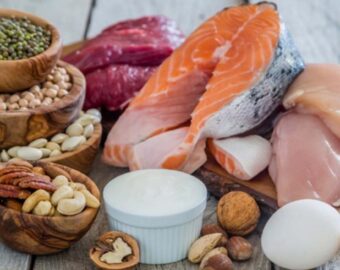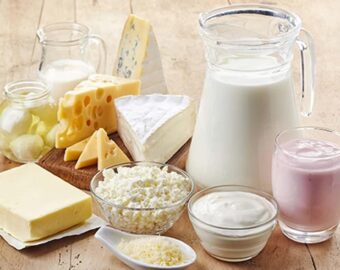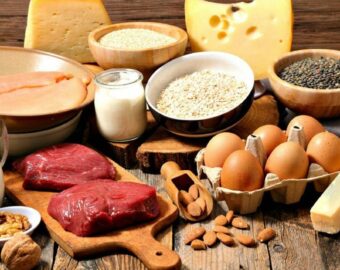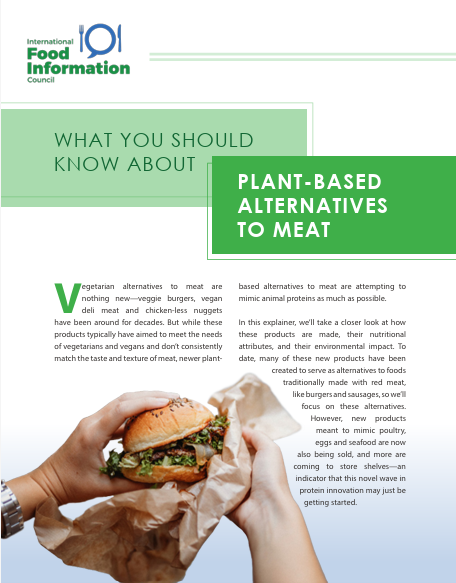
Protein

Quick Links

Key Messages
These these science-backed key messages to confidently answer questions and guide conversations about protein.
- What is protein? Protein is an essential macronutrient that supports overall health. It helps build and maintain muscles and plays a key role in many body processes, including the production of hormones, neurotransmitters and enzymes. Proteins are made of amino acids, nine of which your body cannot make on its own. These “essential amino acids” must come from the foods you eat.[1],[2],[3]
- Where can you find protein? Protein is found in a wide variety of foods. The Dietary Guidelines for Americans recommend including both plant and animal sources such as lean meats and poultry; seafood; eggs; low-fat dairy (milk, yogurt, cheese); beans, peas, lentils; soybeans and soy products such as tofu or tempeh; and nuts and seeds.[4]
- How much protein do you need? Protein needs vary based on age, health and activity level. The Recommended Daily Allowance (RDA) for protein is 0.8 grams per kilogram of body weight per day for adults 18 years and older.[3],[5] That’s about 64 grams per day for someone weighing 175 pounds. Most people meet this through their regular diet. Some groups – like pregnant or breastfeeding individuals, athletes and people using certain weight loss medications – may need more.[6]
Research
Stay informed on the latest protein developments by exploring peer-reviewed research, scientific reviews and emerging consumer trends.
IFIC Spotlight Survey: Americans’ Perceptions Of Protein
Learn More2024 IFIC Food & Health Survey
Learn MoreIFIC Spotlight Survey: Consumer Viewpoints & Purchasing Behaviors Regarding Plant & Animal Protein
Learn MoreIFIC Spotlight Survey: Plant Alternatives To Animal Meat 2.0
Learn MoreIFIC Spotlight Survey: Perceptions of Nutrient Density, How It Impacts Purchasing Decisions and Its Connection to Health Goals
Learn MoreIFIC Spotlight Survey: Protein Perceptions & Consumption Behaviors
Learn MoreResources
From myths and facts to safety and effects, our Insights collection tackles some of the tougher questions surrounding dietary protein in our daily lives.


Nutrition 101 Video Series: The Principles of Protein
February 27, 2019

The Power of Protein: Dairy
June 24, 2020

A Primer on Protein Powders
November 14, 2018
Webinars
Sharpen your science communication skills with our free webinars and CPE programs. All feature expert-backed strategies for translating nutrition and health science clearly and confidently.
In the News
Catch up on the latest headlines about protein for inspiration to help shape your own conversations around this everyday ingredient.



